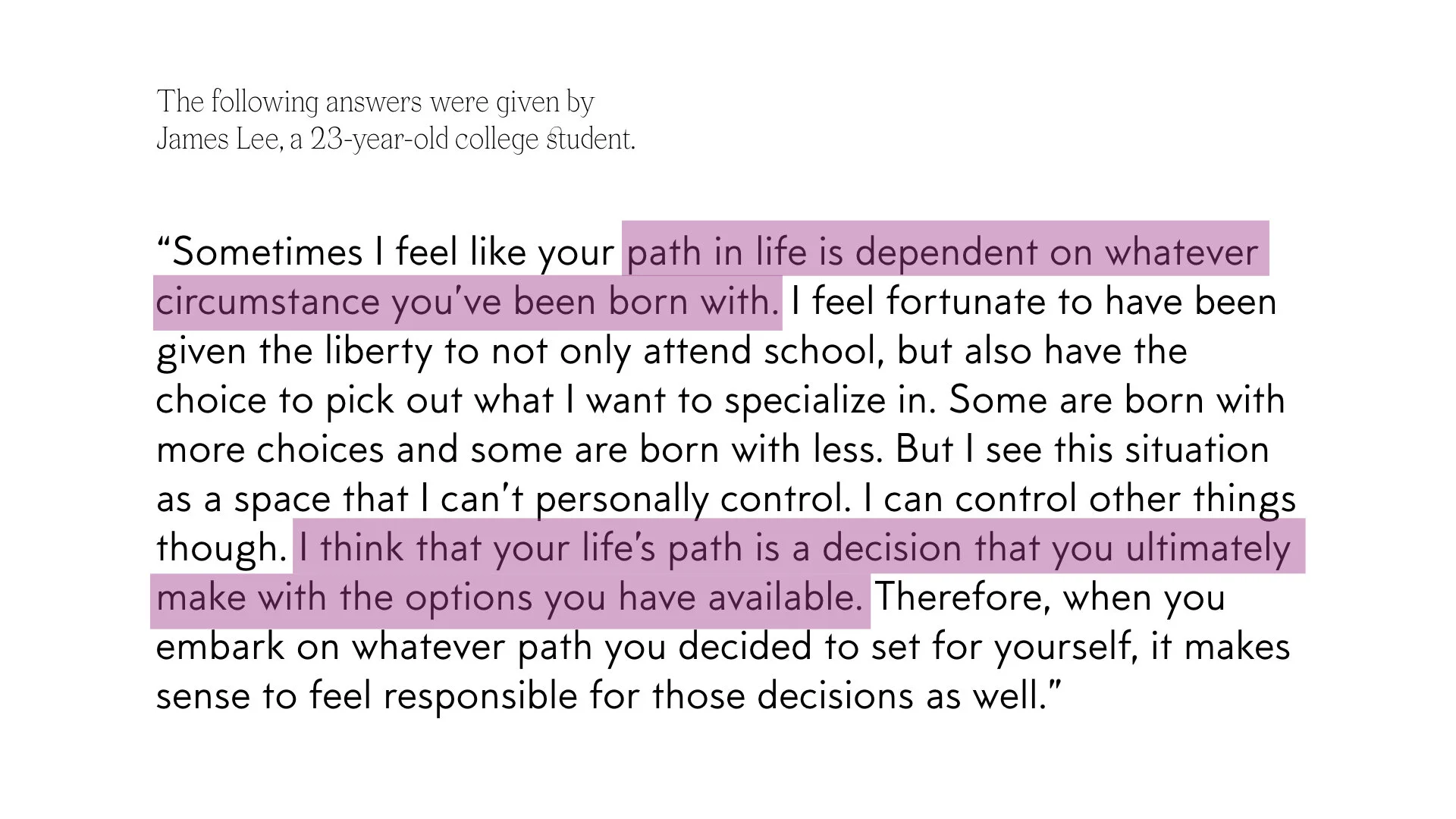In Whose Hands?
Publication Design
Are we destined to follow a certain path in life? How do the concepts of fate and destiny fit with the belief of free will? This 128-page publication guides readers through an interactive journey in exploring their belief(s) and other people’s viewpoints on the topics of fate, destiny, free will, karma, and chance. The book educates readers about some of the history, mystical practices, psychological benefits, and disadvantages of each theory. In addition, the book contains short interviews and a hidden section on the concept of Chance.
Why I chose this topic: One night I had a three-hour discussion with my friend about the human existence and if we had full control over our own lives. I had a very different perspective from my friend due to my religious background. I still had many questions and was not completely sure what I believed and why. Through this book, I wanted to help others explore their views, while understanding my own.
Duration: Fall 2020, 7 Weeks
Tools: Illustrator, Photoshop, InDesign, Kettle Stitch Binding
Definitions
Fate: The universal principle by which the order of things is presumably prescribed. It cannot be changed, no matter how hard we try.
Destiny: Is determined not solely by fate, but by how we choose to respond to fate. Destiny is something we can shape and alter.
Karma: Mean action, work or deed; it also refers to the spiritual principle of cause and effect.
Free Will: Is the ability to choose between different possible courses of action unimpeded.
Chance: Something that happens unpredictably without discernible human intention or observable cause.
Prototyping
I read the whole book and marked areas that could include interactions (e.g. questions and statements leading to another section of the book).
Interviews
I interviewed five people, ranging from an 11-year-old to a 54-year-old. They answered the five questions introduced at the start of the book to show the reader various perspectives and circulate the content of the book. The interviews acted as page breakers as they were smaller in size than the rest of the pages.
I learned that the idea of chance was necessary to include in the book after reading people’s answers. Many explained that certain occurrences were just situational and coincidental.
Chance
The introduction to the 'Chance' section is the only part of the book that is yellow. It can only be found by chance or after the reader has perused most of the book. This spread prompts the reader to reflect on the choices they've made throughout their reading journey
Book Details
Reading experience goals: Interactivity, non-linearity (with multiple starting and ending points), driven by beliefs, and stimulating curiosity
Unity created through: Information order, line graphics, questions embedded throughout the book
Variety created through: Page sizes (interview pages are smaller), content, different typeface for each theory
Final Reflection
As I designed and made this book by hand, I developed a deeper appreciation for books and their physical quality. The most exciting moment for me in this project was when I went through my prototype and marked areas to place thought-provoking questions and comments for the reader. Although I curated the articles, interviewed people, and organized the content, I did not really dive deeper into the concepts and question my beliefs until then. I had hoped to identify my beliefs after creating this piece but interestingly, ended up becoming more curious about these theories.


















